What do recession fears and share market falls mean for the RBA and investors?
With it failing to materialise and inflation falling enabling central banks to pivot to rate cuts many thought it would be avoided, and shares surged to record highs into July. However, recession fears are now back with a vengeance, particularly in the US, so share markets have fallen sharply from their highs – with the key direction-setting US share market down 8.5% and global shares off 8.9% and Australian shares having a 5.7% fall from its high last week.
What's more, bond yields, commodity prices and the Australian Dollar are all down consistent with renewed growth concerns. This may have been accentuated by an unwinding of so-called Yen carry trades (where investors borrow cheaply in Yen and invest globally) after the Bank of Japan raised interest rates. Even Bitcoin has had a near 30% fall from its July high indicating again it’s become a leveraged version of shares.
So why the sudden recession worries? How serious is the risk? Does it mean central banks including the RBA have got it wrong? And what does it mean for investors?
More US recession indicators flashing red
However, the US economy has been robust, and this has kept the key direction setting the US share market strong until recently. However, while the US economy has been stronger than expected, the risk of recession never fully went away, with key indicators highlighting ongoing recession risk. In particular:
- The US yield curve which is a guide to whether monetary policy is tight or loose has been flashing red, with short-term interest rates above long-term rates, since 2022. And while this has given false signals it has preceded all US recessions over the last 60 years. It’s still inverted and so its recession signal remains.
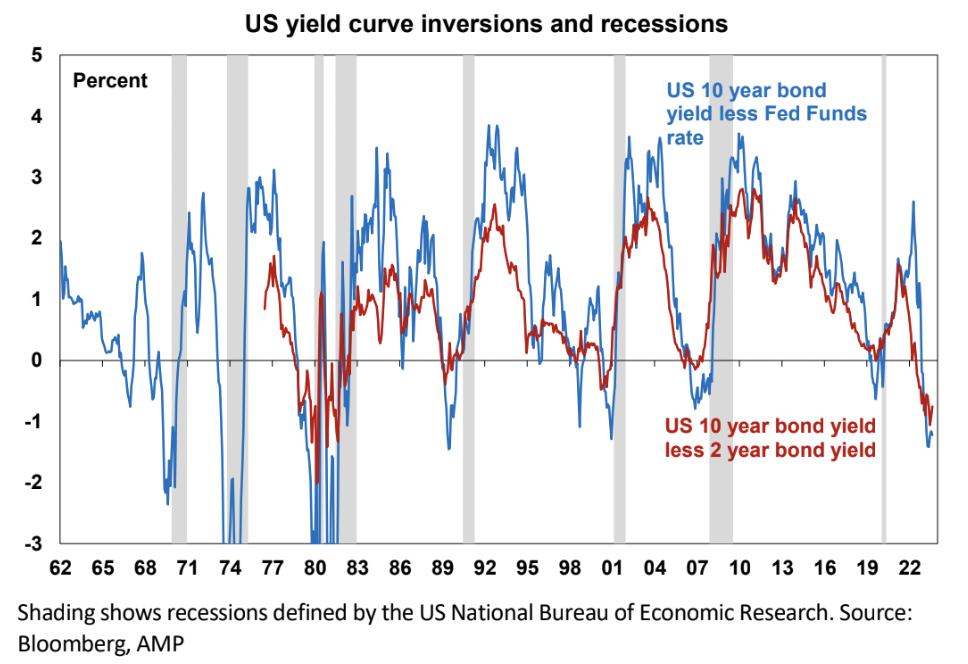
- The US leading economic index – which combines things like building permits & confidence – has had a fall consistent with past recessions.
However, the resilience in economic growth could have just been due to (what Milton Friedman long ago called) the "long and variable lags" with which monetary policy impacts economic activity. The impact of rate hikes was stretched out this time by the reopening boost from the pandemic, household saving buffers built up in the pandemic and strong labour markets partly reflecting a shortage of workers.
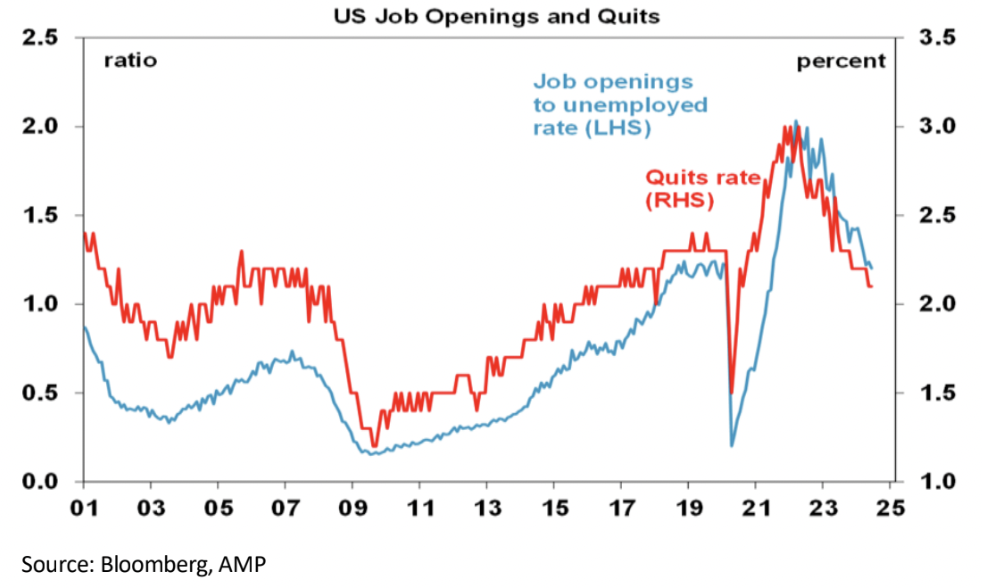
Based on this a US economist named Claudia Sahm observed that whenever the 3-month moving average of the unemployment rate rises by 0.5% above its prior 12-month low a recession has been underway. This has become known as the Sahm Rule and it was triggered by July jobs data in the US on Friday with unemployment spiking to 4.3%, up from a low of 3.4%. It can be seen at work in the next chart.
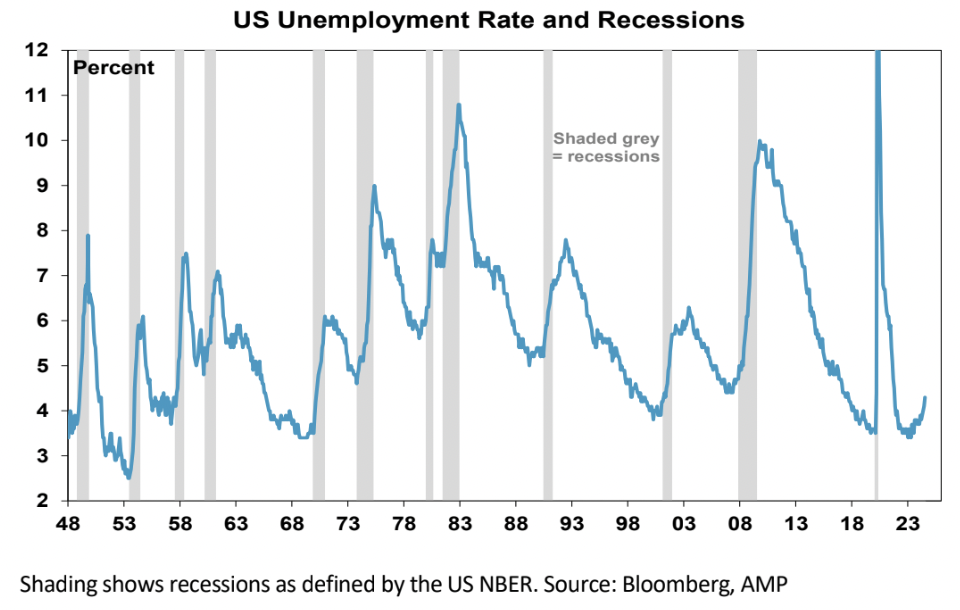
It has a perfect track record, but relationships that work in the past don’t always work in the future and it may have been distorted by a lumpy 420,000 rise in the labour supply in July. That said it’s hard to ignore and suggests along with the still inverted US yield curve and the slump in the US leading indicator that recession risk is now very high in the US.
This is why share markets have plunged and the US money market is now back to allowing nearly 5 rate cuts this year. Recall it was expecting nearly 7 cuts early this year, so it’s almost gone full circle!
What about Australia?
- Interest rates have gone up by more in Australia than in the US as measured by the mortgage rates people pay.
- Household debt servicing costs are now at a record share of household income in Australia (which is not the case in the US), and Australia has far more overvalued housing than the US.
- Australian real household spending has slowed to a crawl.
- The boost to Australian economic growth from record population growth looks set to slow over the year ahead by at least one percentage point. This will more than offset the boost from tax cuts.
- Like in the US, job vacancies have been falling here for two years and this will likely soon feed through to a sharp slowdown in job growth and a rise in unemployment which is already up to 4.1% from 3.5%.
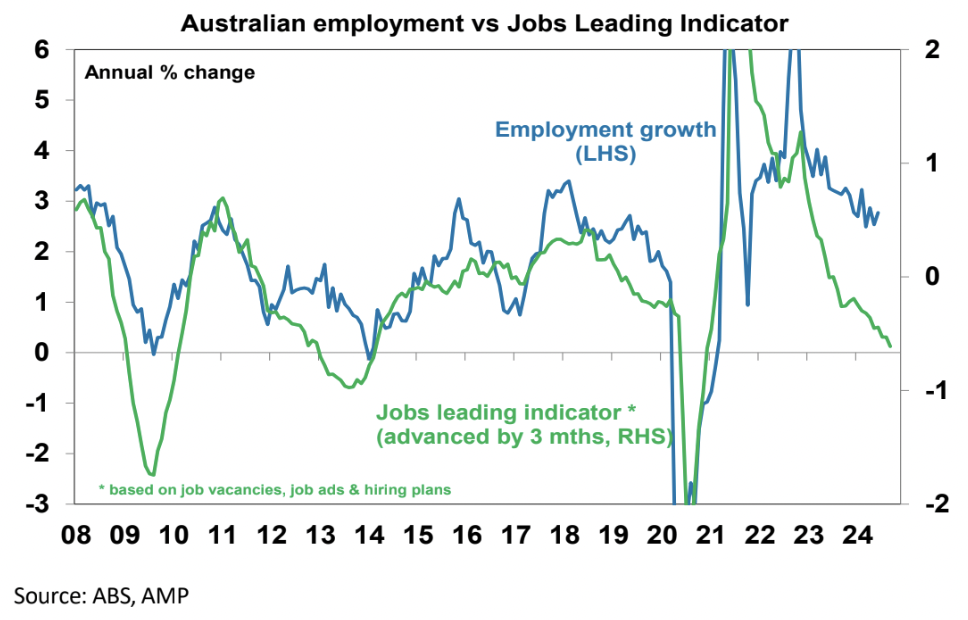
- A US recession will drag down global growth which will mean less demand for our exports and indirectly impact confidence.
Have central banks, including the RBA, got it wrong?
This has likely been made worse by the pause in progress getting inflation down over the last six months in the US and then in Australia.
What will recession mean for Australians?
Recessions eventually also mean lower growth in the cost of living and often lead to lower levels of immigration and less household formation which could take pressure off rents and home prices.
What would be the impact on shares?
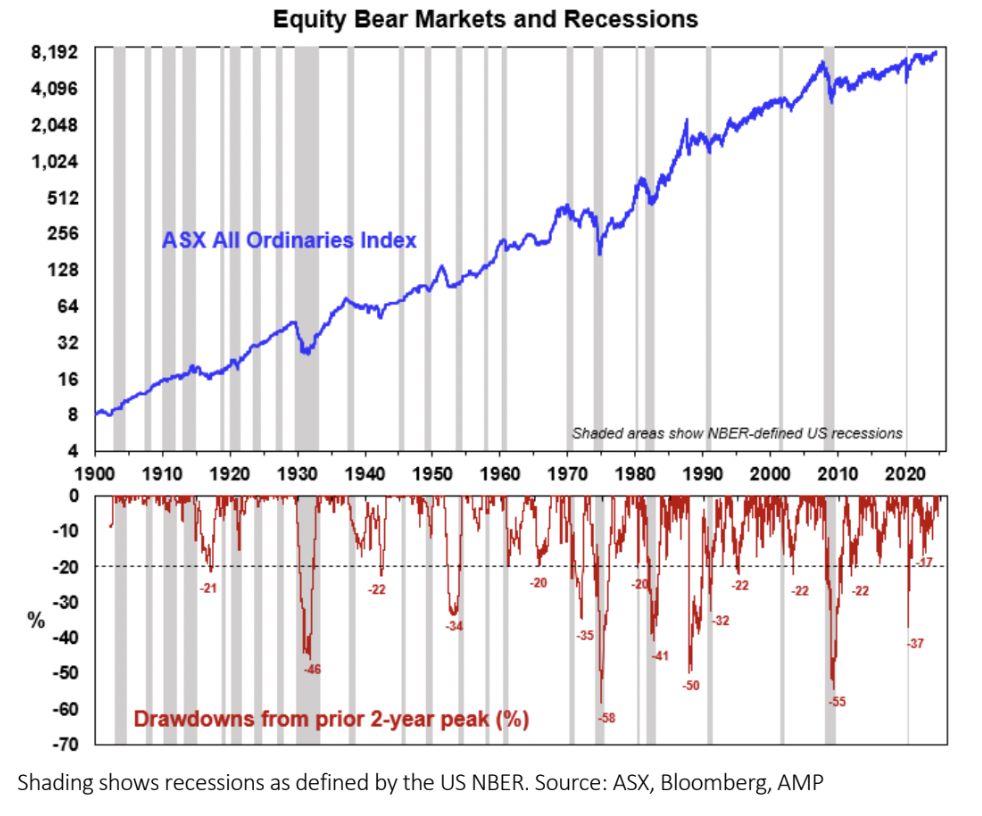
Implications for investors
3 topics

